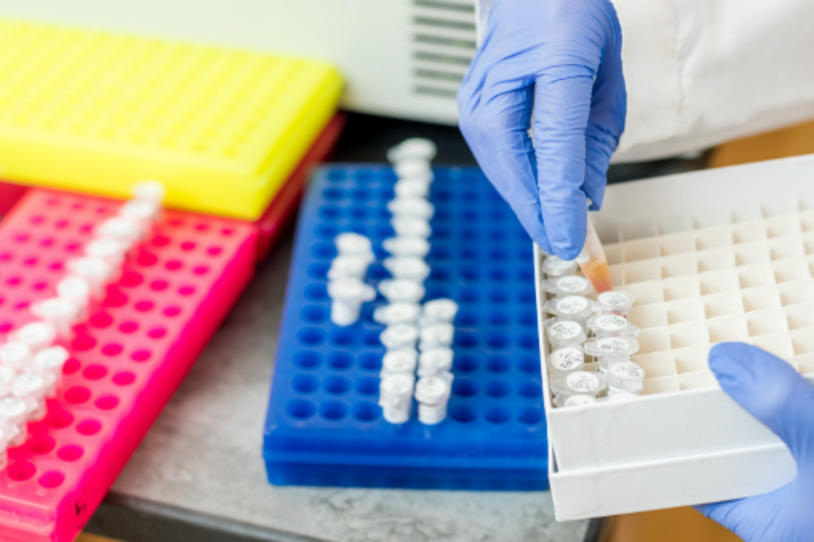
People with Parkinson’s and families often ask about stem cells as a treatment for Parkinson’s disease (PD). Since stem cells can be turned into almost any other type of cell, it’s natural to wonder if they could be a cure, or at least an improved therapy, for PD. As simple as it may seem, this is a complex area of study with many questions to answer. But clinical trials are evaluating stem cells in PD and recent research has shown progress and promise. (Read about a one-person stem cell trial in Parkinson’s.) Still, stem cells have not yet been proven safe or effective for PD.
That’s an important point. Because across the world, clinics offer unproven stem cell treatments outside of clinical trials, often for tens of thousands of dollars, creating confusion and often false hope for patients and families. At best, these treatments may hurt only your pocketbook. At worst, they could cause significant side effects. In a recent survey published in the Annals of Neurology, researchers found that among more than 200 neurologists, about 25 percent had a patient who experienced a complication with stem cell treatment, including worsening of neurological disease, stroke, infection, tumor and even death. And with underreporting likely, side effects may be happening at much higher rates.
What to know about stem cell treatments marketed and sold by clinics:
- Stem cell clinics selling treatments are not the same as stem cell clinical trials approved and highly regulated by the U.S. Food and Drug Administration (FDA).
- The risks and potential benefits of treatments offered by stem cell clinics often have not been evaluated in clinical trials.
- Each clinic may have a unique treatment procedure. But many take a person’s fat or skin cells (which contain stem cells), treat them with certain factors, and then infuse them into the blood. This does not turn stem cells into the brain cells lost in Parkinson’s, nor does it get the cells to the brain, where they need to work. (This is what some ongoing PD stem cell clinical trials aim to do.)
- While some people say they experience benefit after stem cell clinic treatments, every person has different symptoms and different responses to the procedure. Without well-designed clinical trials, there is no way to know what is responsible for this benefit – placebo effect, other concurrent treatments, etc.
- Receiving an unproven therapy may make you ineligible for participation in research studies.
- There often are significant costs involved and possible complication costs may not be covered by insurance.
If you are thinking about pursuing a stem cell clinic treatment, make sure to discuss it with your Parkinson’s doctor beforehand and consider these questions:
- What is the treatment procedure? How is it similar to or different than procedure used in ongoing, FDA-approved stem cell clinical trials?
- How does the treatment claim to work?
- What research supports the treatment? (Ask for clinical trial results, not only individual testimonials or case reports.)
- What are the possible benefits on Parkinson’s symptoms? What are the risks and side effects?
- Could it affect your Parkinson’s medications? How?
- Is it part of an FDA-approved clinical trial? (These trials file paperwork with the FDA and do not charge fees for participation.) Read the FDA statement on stem cell therapies.
- What is the cost to you? (Insurance typically does not cover costs of treatment or patient care outside of a clinical trial.)
In several ongoing clinical trials, researchers aim to create brain cells from stem cells in fat or skin and inject them directly into the brain to treat Parkinson’s symptoms. Other clinical trials are testing intravenous (IV) infusions of bone marrow stem cells to target inflammation and potentially slow Parkinson’s progression. While early stem cell work has shown promise, many questions remain: What is the best process for creating brain cells from stem cells or cultivating bone marrow stem cells? What is the correct number of stem cells to implant or infuse? What is the optimal procedure to do so (how many cells, how many times, etc.)? Does one procedure work “better” than another? Who are the ideal candidates? Could stem cells treat Parkinson’s symptoms, slow disease progression or both? Over time, do the cells stay alive? Cause complications? (In a clinical trial of implanted stem cells in the late 1990s, many Parkinson’s patients developed constant dyskinesia – abnormal, involuntary movement that can happen with long-term levodopa use.) What Parkinson’s symptoms respond to this treatment? Who are the ideal candidates for this treatment? Watch a webinar to learn how ongoing PD stem cell trials are answering these questions.
For more on stem cells and Parkinson’s, watch a video, listen to a podcast and visit the International Society for Stem Cell Research’s website.
